Abstract
Twenty organic Salmonella mutagens, seven of which (including benzo[a]pyrene) are established skin carcinogens, and one of which (2-chloroethanol) is a well-defined noncarcinogen to skin, have been evaluated for skin-sensitizing activity using the local lymph node assay. The relative mutagenicity of the agents to Salmonella was also established. Fourteen of the chemicals were positive in the local lymph node assay, including the seven skin carcinogens. 2-Chloroethanol was inactive as a sensitizing agent. We suggest that a variety of factors contributes to the lack of sensitizing activity of the remaining six bacterial mutagens: extremes of intrinsic chemical reactivity, high water solubility reducing dermal translocation, and inappropriate dermal metabolism. Two reference skin-sensitizing agents (an oxazolinone and fluorescein isothiocyanate) were established as in vitro clastogens after their recognition as nonmutagens to Salmonella. These data imply that mutagenicity, rather than simply activity in the Salmonella assay, is a primary stimulus for electrophilic sensitization and carcinogenic initiation in the skin. We conclude that genotoxicity data for an agent can provide indications of the agent's potential to induce skin sensitization and that genotoxins which are skin-sensitizing agents have an enhanced potential to initiate skin carcinogenesis. We suggest that common, albeit individually distinct, structure-activity relationships underpin genotoxicity, skin sensitization, and the initiation of skin carcinogenesis. These relationships should simplify the hazard evaluation of chemicals and contribute to a reduction in animal usage. Several predictions of skin carcinogenicity are made based on the data presented.
Full text
PDF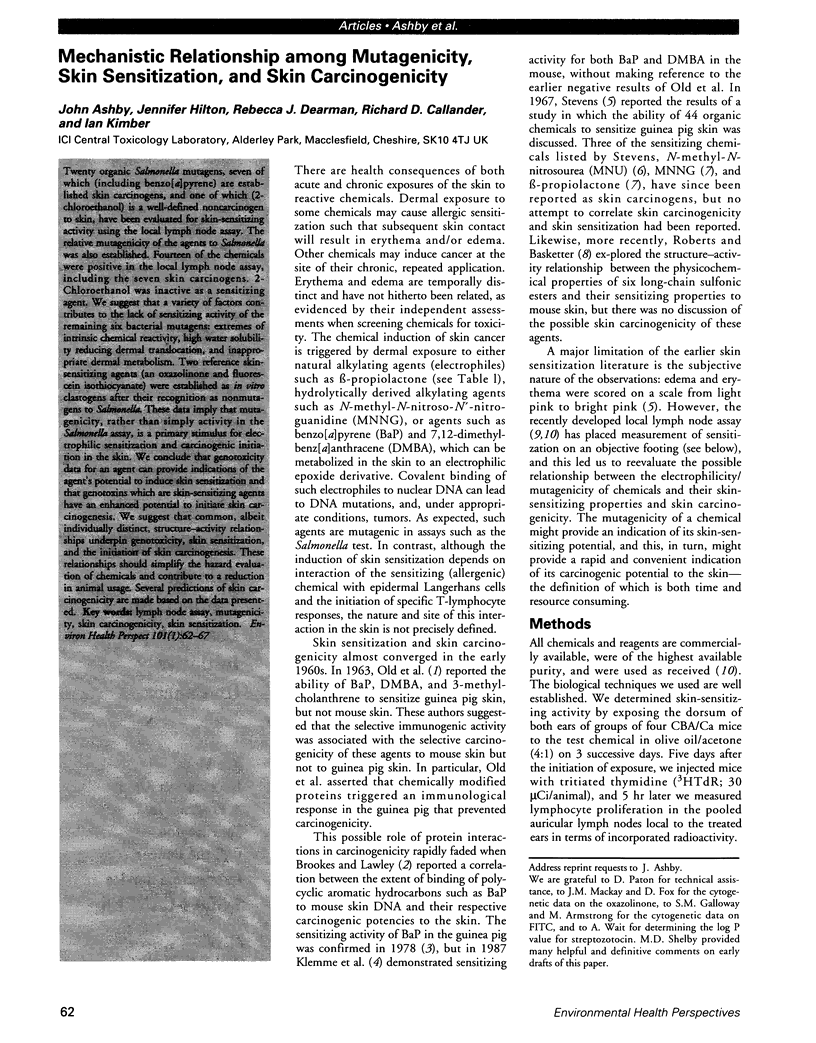
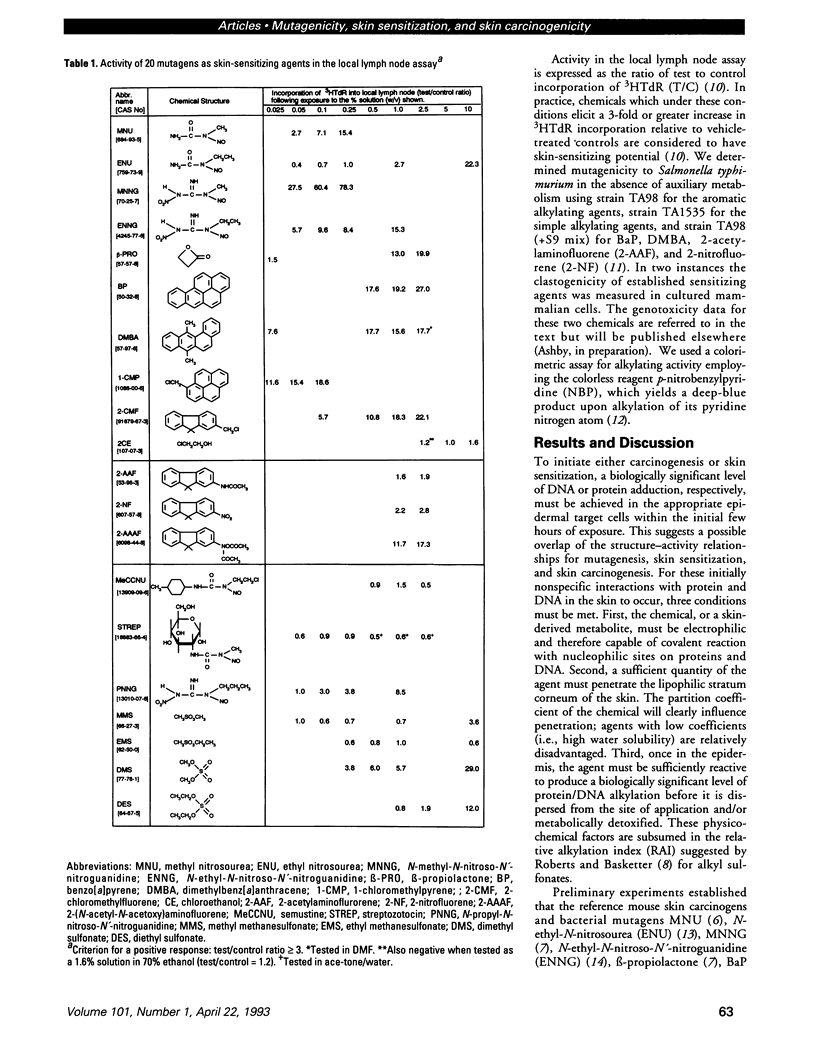
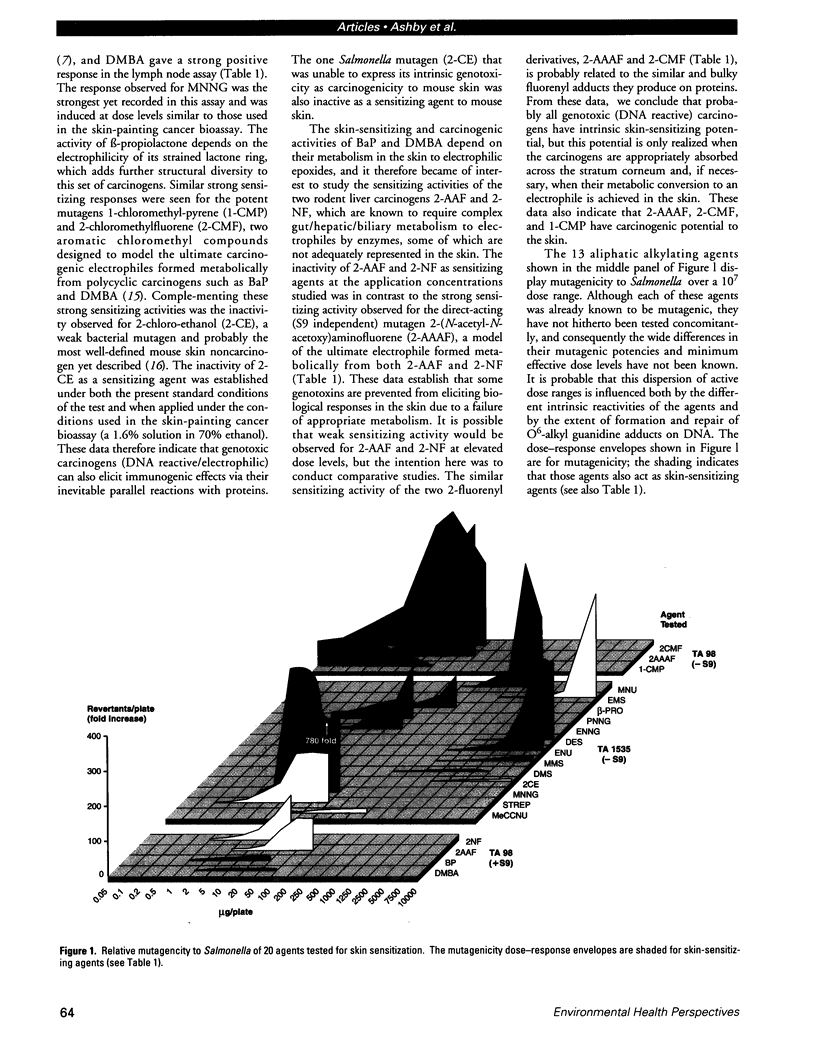
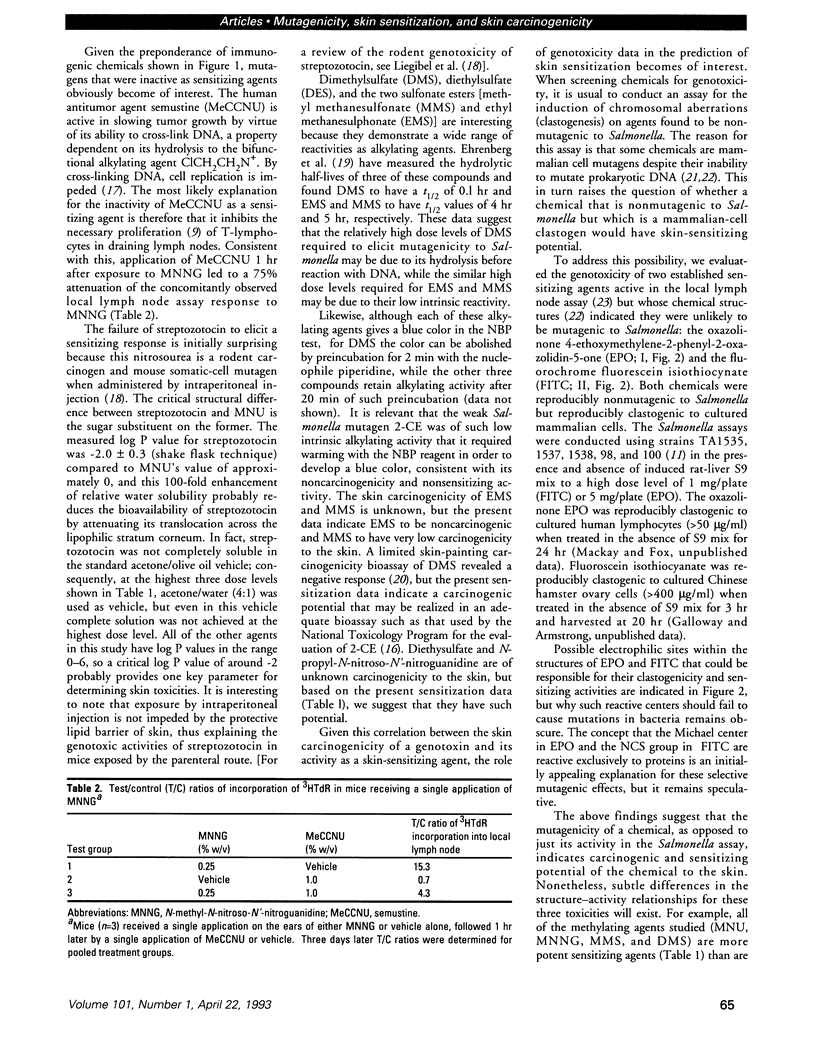
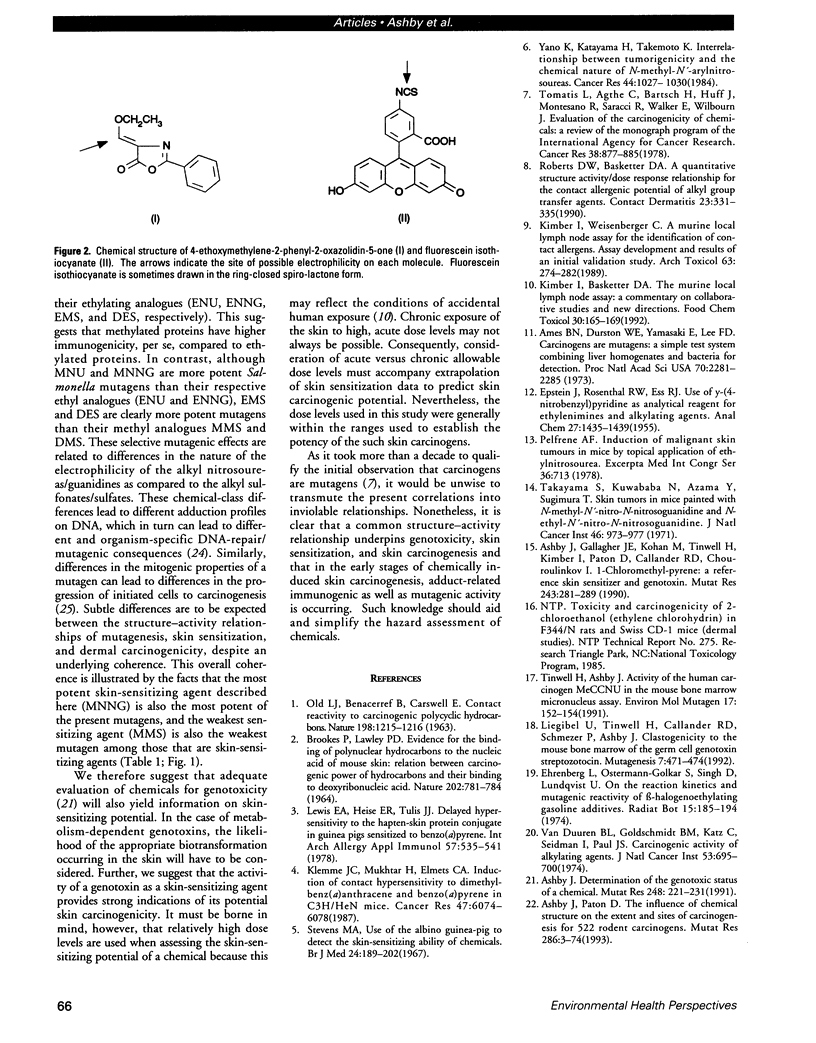
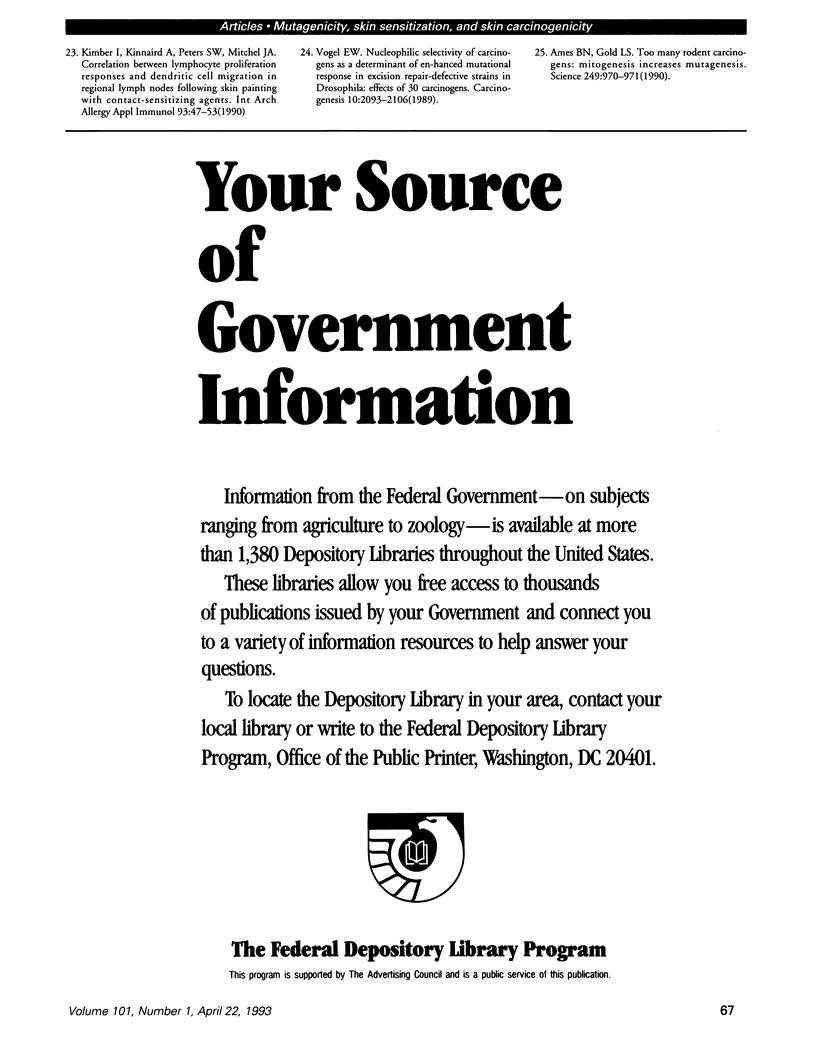
Selected References
These references are in PubMed. This may not be the complete list of references from this article.
- Ames B. N., Durston W. E., Yamasaki E., Lee F. D. Carcinogens are mutagens: a simple test system combining liver homogenates for activation and bacteria for detection. Proc Natl Acad Sci U S A. 1973 Aug;70(8):2281–2285. doi: 10.1073/pnas.70.8.2281. [DOI] [PMC free article] [PubMed] [Google Scholar]
- Ames B. N., Gold L. S. Too many rodent carcinogens: mitogenesis increases mutagenesis. Science. 1990 Aug 31;249(4972):970–971. doi: 10.1126/science.2136249. [DOI] [PubMed] [Google Scholar]
- Ashby J. Determination of the genotoxic status of a chemical. Mutat Res. 1991 Jun;248(2):221–231. doi: 10.1016/0027-5107(91)90058-v. [DOI] [PubMed] [Google Scholar]
- Ashby J., Gallagher J. E., Kohan M., Tinwell H., Kimber I., Paton D., Callander R. D., Chouroulinkov I. 1-Chloromethylpyrene: a reference skin sensitizer and genotoxin. Mutat Res. 1990 Apr;243(4):281–289. doi: 10.1016/0165-7992(90)90144-9. [DOI] [PubMed] [Google Scholar]
- Ashby J., Paton D. The influence of chemical structure on the extent and sites of carcinogenesis for 522 rodent carcinogens and 55 different human carcinogen exposures. Mutat Res. 1993 Mar;286(1):3–74. doi: 10.1016/0027-5107(93)90003-x. [DOI] [PubMed] [Google Scholar]
- BROOKES P., LAWLEY P. D. EVIDENCE FOR THE BINDING OF POLYNUCLEAR AROMATIC HYDROCARBONS TO THE NUCLEIC ACIDS OF MOUSE SKIN: RELATION BETWEEN CARCINOGENIC POWER OF HYDROCARBONS AND THEIR BINDING TO DEOXYRIBONUCLEIC ACID. Nature. 1964 May 23;202:781–784. doi: 10.1038/202781a0. [DOI] [PubMed] [Google Scholar]
- Kimber I., Basketter D. A. The murine local lymph node assay: a commentary on collaborative studies and new directions. Food Chem Toxicol. 1992 Feb;30(2):165–169. doi: 10.1016/0278-6915(92)90153-c. [DOI] [PubMed] [Google Scholar]
- Kimber I., Kinnaird A., Peters S. W., Mitchell J. A. Correlation between lymphocyte proliferative responses and dendritic cell migration in regional lymph nodes following skin painting with contact-sensitizing agents. Int Arch Allergy Appl Immunol. 1990;93(1):47–53. doi: 10.1159/000235278. [DOI] [PubMed] [Google Scholar]
- Kimber I., Weisenberger C. A murine local lymph node assay for the identification of contact allergens. Assay development and results of an initial validation study. Arch Toxicol. 1989;63(4):274–282. doi: 10.1007/BF00278640. [DOI] [PubMed] [Google Scholar]
- Klemme J. C., Mukhtar H., Elmets C. A. Induction of contact hypersensitivity to dimethylbenz(a)anthracene and benzo(a)pyrene in C3H/HeN mice. Cancer Res. 1987 Nov 15;47(22):6074–6078. [PubMed] [Google Scholar]
- Lewis F. A., Heise E. R., Tulis J. J. Delayed hypersensitivity to hapten-skin protein conjugates in guinea pigs sensitized to benzo(a)pyrene. Int Arch Allergy Appl Immunol. 1978;57(6):535–541. doi: 10.1159/000232149. [DOI] [PubMed] [Google Scholar]
- Liegibel U., Tinwell H., Callander R. D., Schmezer P., Ashby J. Clastogenicity to the mouse bone marrow of the mouse germ cell genotoxin streptozotocin. Mutagenesis. 1992 Nov;7(6):471–474. doi: 10.1093/mutage/7.6.471. [DOI] [PubMed] [Google Scholar]
- OLD L. J., BENACERRAF B., CARSWELL E. Contact reactivity to carcinogenic polycyclic hydrocarbons. Nature. 1963 Jun 22;198:1215–1216. doi: 10.1038/1981215a0. [DOI] [PubMed] [Google Scholar]
- Roberts D. W., Basketter D. A. A quantitative structure activity/dose response relationship for contact allergic potential of alkyl group transfer agents. Contact Dermatitis. 1990 Nov;23(5):331–335. doi: 10.1111/j.1600-0536.1990.tb05167.x. [DOI] [PubMed] [Google Scholar]
- Stevens M. A. Use of the albino guinea-pig to detect the skin-sensitizing ability of chemicals. Br J Ind Med. 1967 Jul;24(3):189–202. doi: 10.1136/oem.24.3.189. [DOI] [PMC free article] [PubMed] [Google Scholar]
- Takayama S., Kuwabara N., Azama Y., Sugimura T. Skin tumors in mice painted with N-methyl-N'-nitro-N-nitrosoguanidine and N-ethyl-N'-nitro-N-nitrosoguanidine. J Natl Cancer Inst. 1971 May;46(5):973–980. [PubMed] [Google Scholar]
- Tinwell H., Ashby J. Activity of the human carcinogen MeCCNU in the mouse bone marrow micronucleus assay. Environ Mol Mutagen. 1991;17(3):152–154. doi: 10.1002/em.2850170303. [DOI] [PubMed] [Google Scholar]
- Tomatis L., Agthe C., Bartsch H., Huff J., Montesano R., Saracci R., Walker E., Wilbourn J. Evaluation of the carcinogenicity of chemicals: a review of the Monograph Program of the International Agency for Research on Cancer (1971 to 1977). Cancer Res. 1978 Apr;38(4):877–885. [PubMed] [Google Scholar]
- Van Duuren B. L., Goldschmidt B. M., Katz C., Seidman I., Paul J. S. Carcinogenic activity of alkylating agents. J Natl Cancer Inst. 1974 Sep;53(3):695–700. doi: 10.1093/jnci/53.3.695. [DOI] [PubMed] [Google Scholar]
- Vogel E. W. Nucleophilic selectivity of carcinogens as a determinant of enhanced mutational response in excision repair-defective strains in Drosophila: effects of 30 carcinogens. Carcinogenesis. 1989 Nov;10(11):2093–2106. doi: 10.1093/carcin/10.11.2093. [DOI] [PubMed] [Google Scholar]


